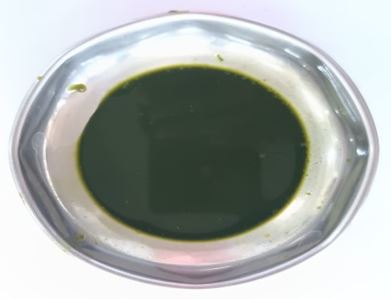Phytochemical Investigation and Traditional Usage of Muyalcheviyan/Shashasruthi (Emelia sonchifolia Linn.)
DOI:
https://doi.org/10.21760/jaims.10.6.16Keywords:
Physicochemical and Phytochemical analysis, Traditional uses, Microbial Limit TestAbstract
Introduction: Muyalcheviyan, a lesser-known but highly revered plant in Ayurveda, has garnered attention for its medicinal properties and therapeutic potential. Despite its limited mention in mainstream herbal literature, its efficacy in traditional Ayurvedic treatments underscores the need for comprehensive research and documentation. Materials and Methods: This article aims to provide an overview of its Physicochemical and Phytochemical analysis, pharmacological properties, microbial limit test and its relevance in contemporary and traditional herbal medicine. All the specified analysis were done according to Ayurvedic Pharmacopoeia of India standards. Results: Phytochemical analysis showed the presence of tannins, alkaloids, flavonoids, proteins etc. The physicochemical analysis revealed all the parameters under the mentioned range. Discussion: Phytochemical, physicochemical, traditional uses and microbial limit test were discussed in the article.
Downloads
References
Balamurugan V, Sheerin F, Velurajan S. A guide to phytochemical analysis. Int J Adv Res Innov Ideas Educ. 2019;5:236–45.
Haseen A, Prasanth LML, Jagajith AA. Comprehensive study on phytochemical analysis of medicinal plants. Int J Pharmacognosy. 2024;11(3):53–64. Available from: http://dx.doi.org/10.13040/IJPSR.0975-8232.IJP.11(3).53-64
Ministry of AYUSH. Ayurvedic Pharmacopoeia of India. Part II, Vol II.
Hussain S, Guruvayoorappan C, Komal KP, Ennaganti S. Molecular docking analysis of doronine derivatives with human COX-2. Bioinformation. 2020;16(6):483–92.
Ogundajo AL, Ewekeye T, Sharaibi OJ, Owolabi MS, Dosoky NS, Setzer WN. Antimicrobial activities of sesquiterpene-rich essential oils of two medicinal plants, Lannea egregia and Emilia sonchifolia, from Nigeria. Plants. 2021;10(3):488.
Thenmozhi K, Saradha M, Manian S, Paulsamy S. In vitro antimicrobial potential of root extracts of the medicinal plant species Emilia sonchifolia (Linn.) DC. Asian J Pharm Clin Res. 2013;6(3):149–51.
Yadava RN, Raj M. Antiviral activity of a new flavone glycoside from Emilia sonchifolia DC. ChemInform. 2012;43(32).
Duraipandiyan V, Ayyanar M, Ignacimuthu S. Antimicrobial activity of some ethnomedicinal plants used by Paliyar tribe from Tamil Nadu, India. BMC Complement Altern Med. 2006;6(1):35.
Girish HV, Satish S. Antibacterial activity of important medicinal plants on human pathogenic bacteria – a comparative analysis. World Appl Sci J. 2008;5(3):267–71.
Tekeli Y, Zengin G, Aktumsek A, Sezgin M, Torlak E. Antibacterial activities of extracts from twelve Centaurea species from Turkey. Arch Biol Sci. 2011;63(3):685–90.
Saradha M, Paulsamy S. Antibacterial activity of leaf and stem bark extracts of the endangered tree species, Hildegardia populifolia (Roxb.) Schott & Endl. (Sterculiaceae). J Res Antimicrobials. 2020;1(1):23–7.
Pospíšil P. Production of reactive oxygen species by photosystem II. Biochim Biophys Acta Bioenerg. 2009;1787(10):1151–60.
Miszalski Z, Libik M, Surówka E, Niewiadomska E. Cu/Zn superoxide dismutase and catalase activities in Pinus mugo needles growing at elevated stands in the mountains, and their photochemical efficiency of PSII. J Plant Physiol. 2005;162(8):895–902.
Alscher RG, Erturk N, Heath LS. Role of superoxide dismutases (SODs) in controlling oxidative stress in plants. J Exp Bot. 2002;53(372):1331–41.
Sinha S, Saxena R. Effect of iron on lipid peroxidation, and enzymatic and non-enzymatic antioxidants and bacoside-A content in medicinal plant Bacopa monnieri L. Chemosphere. 2006;62(8):1340–50.
Habig WH, Pabst MJ, Jakoby WB. Glutathione S-transferases: the first enzymatic step in mercapturic acid formation. J Biol Chem. 1974;249(22):7130–9.
Shen SM, Shen LG, Lei QF, Si JY, Liu CM, Lu H. Chemical constituents contained in aerial parts of Emilia sonchifolia. China J Chin Materia Medica. 2012;37(21):3249–51.
Dixon RA, Dey PM, Lamb CJ. Phytoalexins: enzymology and molecular biology. Adv Enzymol Relat Areas Mol Biol. 1983;55:1–136. doi: 10.1002/9780470123010.ch1
Kumar S, Mishra A, Pandey AK. Antioxidant mediated protective effect of Parthenium hysterophorus against oxidative damage using in vitro models. BMC Complement Altern Med. 2013;13:120. doi: 10.1186/1472-6882-13-120.















